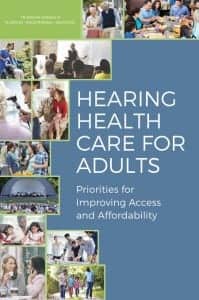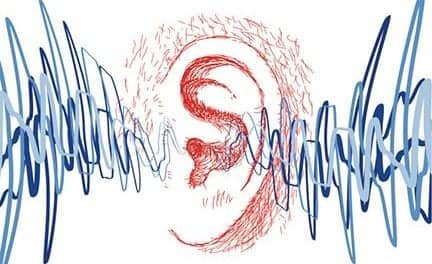On June 2, 2016, the NIDCD issued the following statement from its director, James F. Battey, Jr, MD, PhD, on the National Academies’ Hearing Health Care Report:

Improving hearing healthcare for adults is an urgent public health problem, and contributing to solutions is a priority for the NIDCD. In 2009, we brought together representatives from federal agencies, researchers, and hearing healthcare professionals to form a working group charged with developing a research agenda to improve accessibility and affordability of hearing healthcare for adults with mild-to-moderate hearing loss. The three-day working group session led to a set of recommendations that has since guided the NIDCD’s research agenda in this area.
Why is hearing healthcare for adults an urgent public health problem? Because some 37.5 million adults in the US report hearing loss in one or both ears—a number that is undoubtedly rising as the number of seniors increases. Because hearing loss is a major—and often overlooked—health problem that can dramatically affect an individual’s everyday life, making it difficult to communicate with family and friends, to understand and follow health providers’ instructions, and to hear potentially life-threatening sirens and alarms. Because hearing loss often leads to isolation, and has been associated with serious conditions such as depression, anxiety, low self-esteem, dementia, reduced mobility, and falls. And because only one in four individuals who could benefit from hearing aids have ever used one, despite the availability of hearing aids that can significantly improve a person’s ability to hear.
The Committee on Accessible and Affordable Hearing Health Care for Adults, convened by the National Academies, describes 12 goals to advance hearing health care in the US. The actions recommended in the report are designed to lead to improved access to a wide range of services and technologies, and to make those services and technologies more affordable for adults with hearing loss. The report also emphasizes the need for greater transparency and awareness among consumers and health providers in order to help consumers make more informed choices in managing hearing loss.
The NIDCD currently supports dozens of clinical and translational research projects to develop and test novel strategies to overcome barriers to care and to improve quality of life for the millions of American adults with hearing loss. We welcome new research initiatives to address hearing health care delivery as well as innovative treatment and assessment approaches.
In the past few years, the nation has taken major steps toward improving the accessibility and affordability of health care for all Americans. It’s time now that steps are taken to extend that effort specifically to hearing health care. It’s time to make hearing healthcare a priority for both individuals with hearing loss and providers, and to integrate hearing healthcare into the broader healthcare system.
We at the NIDCD commend the 17-member expert panel that conducted the study. The committee’s hard work provides an opportunity to bring evidence-based treatment, diagnosis, and prevention of hearing loss to a greater number of US adults than ever before.
We look forward to collaborating with our colleagues at the Veterans Administration, Food and Drug Administration, Centers for Disease Control and Prevention, the Department of Defense, and other federal agencies, as well as hearing healthcare providers, device manufacturers, and consumers to put the report’s recommendations into action.
Some 25 years ago, we joined together with federal agencies and hearing health professionals to put science into action by implementing widespread newborn hearing screening. In 1993, only 1 in 10 newborns had their hearing screened. Today, nearly all children born in a US hospital are screened for hearing loss before they leave the hospital.
The newborn hearing screening program is a model of hearing health care success, and I am particularly proud of the role that the NIDCD played. Together, let us embrace the National Academies’ nascent report on adult hearing health care and apply the same level of commitment and vigor to improving the quality of life and public health outcomes for the millions of American adults with hearing loss.





